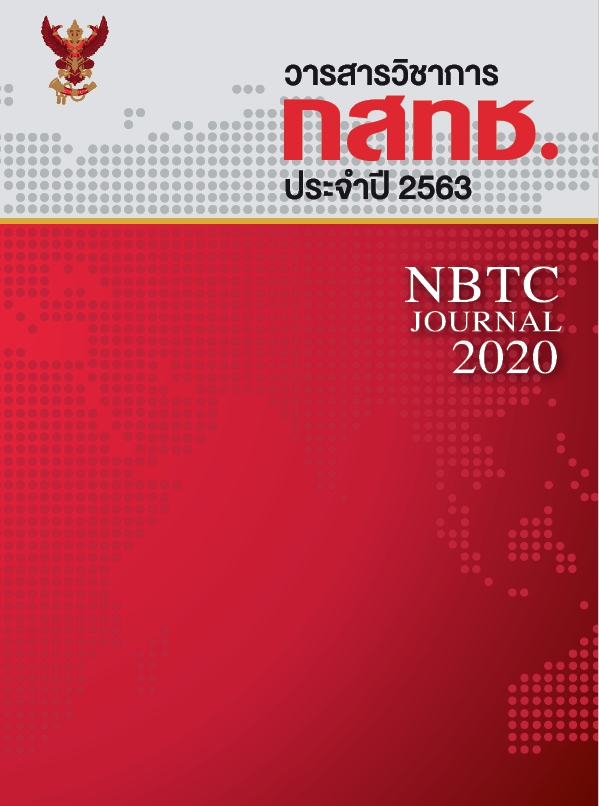News Presentation Process and Fake News Screening of News Television Program of Television Channel 7HD
Keywords:
News presentation process, Fake news screening, News Program of television Channel 7HDAbstract
Research study the objective of “News presentation process and fake news screening of news television program of television channel 7HD”. To study the meaning, format, process of presenting news and how to screen for fake news in view of the news editorial of television channel 7HD, this research was a qualitative research case study. Data were collected through in-depth interviews with three key informants: news manager. News editors and reporters. In total 9 people. The research results were found that the meaning of fake news consists of 4 things: 1. News that contains false content 2. Propaganda 3. News presented to one side 4. Impersonation. And there are 7 forms of fake news: 1. Satire or parody 2. Link to mimic 3. Misrepresent 4. False contexts 5. Perversion 6. Falsification 7. Change according to objectives. And the news presentation process has 4 steps: 1. Pre-production preparation 2. Inspection and screening process 3. Production process 4. Post-production process. And there are 4 steps to filtering fake news: 1. Evaluate the content for preliminary observations. 2. Inspect the source of the news. 3. Check the accompanying sources. 4. Ask the agency or expert directy
References
จิรโรจน์ จิตราพัฒนานันท์. (2560). การศึกษาวิจัยกลยุทธ์ในการนำเสนอรายการข่าวโทรทัศน์ของสถานีโทรทัศน์สีกองทัพบกช่อง 7 ผ่านรายการสนามข่าว 7 สี. บัณฑิตวิทยาลัย มหาวิทยาลัย กรุงเทพ.
ณัฐนันท์ อิทธิยาภรณ์. (2562). ผลกระทบของข่าวปลอม แนวทางการรับมือของผู้บริโภคสื่อ.ค้นเมื่อ 8 กุมภาพันธ์ 2563 จาก https://www.isranews.org/isranews-article/78298-fake-78298.html.
นันทิกา หนูสม. (2561). การศึกษาลักษณะของข่าวปลอมในประเทศไทยและระดับความรู้เท่าทันข่าวปลอมบนเฟซบุ๊กของผู้รับสารในเขตกรุงเทพมหานคร. บัณฑิตวิทยาลัย มหาวิทยาลัยกรุงเทพ.
ประวีณา พลเขตต์. (2561). การรับรู้และการรู้เท่าทันสื่อของผู้ชมรายการชัวร์ก่อนแชร์. วารสารการสื่อสารและการจัดการนิด้า, 4(3), 47-62.
พัชราภา เอื้ออมรวนิช. (2561). ความรับผิดชอบต่อสังคมในการนำเสนอข่าวสารของสื่อมวลชนในยุค ข่าวสารไร้พรมแดน. (รายงานผลการวิจัย). มหาวิทยาลัยราชภัฏธนบุรี.
พิณ พัฒนา. (2560). รู้เขาหลอกแต่เต็มใจให้หลอก รู้จัก ‘Fake News’ ข่าวปลอมออนไลน์ที่เราชักเจอจริงบ่อยขึ้นทุกวัน. ค้นเมื่อ 8 กุมภาพันธ์ 2563 จาก http://www.kmutt.ac.th/organization/ssc334/asset5.html.
ภัสวลี นิติเกษตรสุนทร. (2547). บทบาทและหน้าที่ของวิทยุกระจายเสียงและวิทยุโทรทัศน์ในฐานะสื่อมวลชน. นนทบุรี : มหาวิทยาลัยสุโขทัยธรรมาธิราช.
ภาณุพงษ์ ทินกร. (2561). การศึกษาปัจจัยที่มีอิทธิพลต่อจรรยาบรรณสื่อโทรทัศน์ในยุคดิจิทัลและ แนวทางกำกับดูแล. บัณฑิตวิทยาลัย มหาวิทยาลัยกรุงเทพ.
วัฒณี ภูวทิศ. (2560). ผู้สื่อข่าวกับการใช้ประโยชน์และความน่าเชื่อถือของข้อมูลในสื่อสังคมออนไลน์เพื่อรายงานข่าวสาร. วารสารศรีนครินทรวิโรฒวิจัยและพัฒนา (มนุษยศาสตร์และสังคมศาสตร์). 9(17), 68-69.
สกุลศรี ศรีสารคาม. (2557). จริยธรรมการใช้สื่อออนไลน์และสื่อสังคมในกระบวนการสื่อข่าวของสื่อไทยในยุคดิจิทัล. กรุงเทพฯ: สภาการหนังสือพิมพ์แห่งชาติ.
สุรพงษ์ โสธนะเสถียร. (2533) การสื่อสารกับสังคม. กรุงเทพฯ: โรงพิมพ์จุฬาลงกรณ์มหาวิทยาลัย
อิสริยะ ไพรีพ่ายฤทธิ์. (2560). Fake News ข่าวปลอม ปัญหาใหญ่ของโลกอินเทอร์เน็ต. ค้นเมื่อ 26 มกราคม 2563 จาก http://www.okmd.tv/blogs/all-things-digital/fake-news-ข่าวปลอม- ปัญหาใหญ่ของโลกอินเทอร์เน็ต.
Cohen, B. C. (1963). The press and, foreign policy. Princeton, NJ: Princeton University Press.
Desai, S., Mooney, H., & Oehrli, J. A. (2017) . “Fake News”, Lies and Propaganda: How to Sort Fact from Fiction. Retrieved March 18, 2020 from http://guides.lib.umich.edu/fakenews.
Lewin, K. (1947). Frontiers in group dynamics: Concept, method and reality in social science; social equilibria and social change. Human Relations, 1, 5–41.
Nurse, M. (2016). Fake news and other types of misinformation defined. Retrieved March 18, 2020 from http://communicationscience.org.au/fake-news-and-other- formsofmisinformation-defined/.
Zaryan, S. (2017). Truth and Trust : How Audiences are Making Sense of Fake News. Unpublished master’s thesis, Lund University, Sweden.
Downloads
Published
How to Cite
Issue
Section
License
The Office of the NBTC holds the copyright of articles appearing in the journal. The Office of the NBTC allows the public or individuals to distribute, copy, or republish the work under a Creative Commons license (CC), with attribution (BY), No Derivatives (ND) and NonCommercial (NC); unless written permission is received from the Office of the NBTC.
Text, tables, and figures that appear in articles accepted for publication in this journal are personal opinion and responsibility of the author, and not binding on the NBTC and the Office of the NBTC. In case of errors, each author is solely responsible for their own article, and not concerning the NBTC and the NBTC Office in any way.



